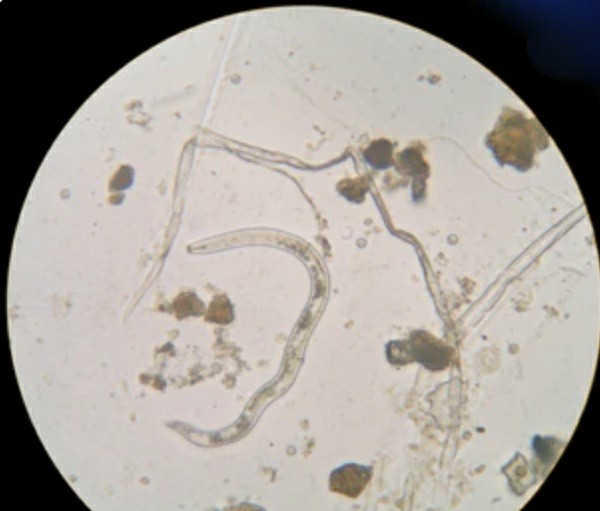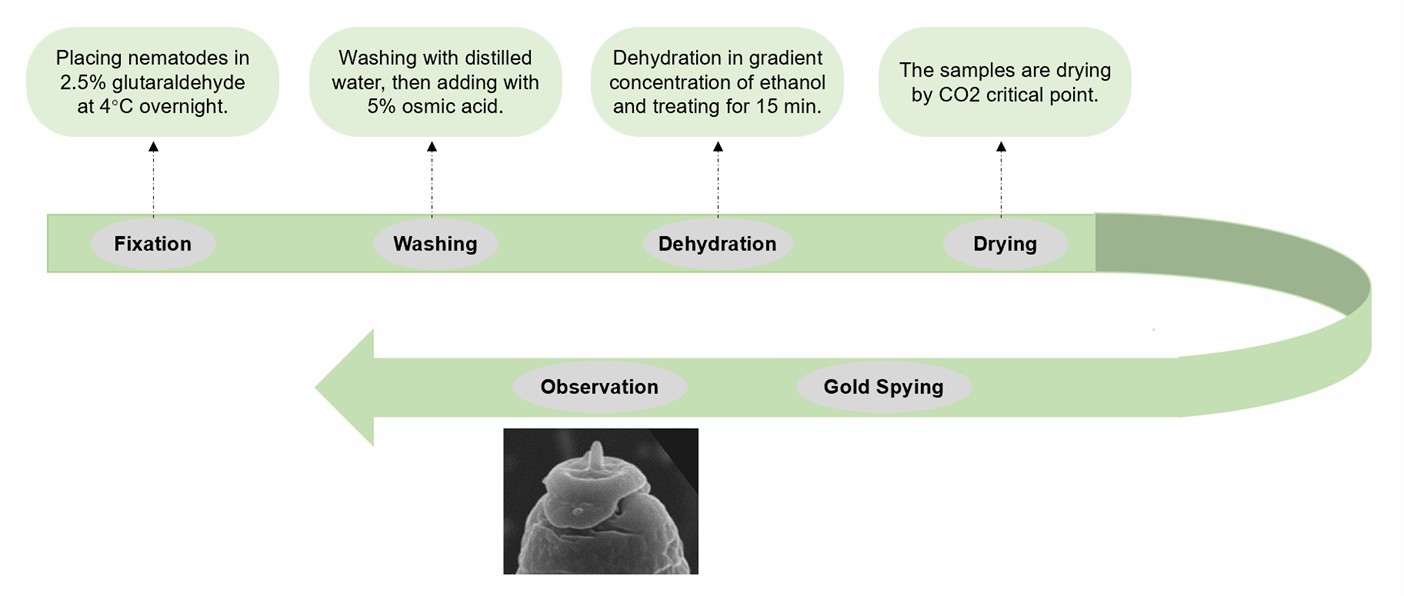Detection and monitoring are the primary measures for preventing and controlling nematode diseases, so the detection and identification of plant nematodes is very important. Morphological detection is a traditional method to observe and analyze morphological characteristics under a microscope. The nematode is identified according to the body length, tail length, tail tip shape, the width of the middle esophageal bulb, location of the vulva, and the presence or absence of the vulva cover.
Lifeasible provides the detection of plant nematodes by light microscopy and scanning electron microscopy to help our customers worldwide in the field of nematode morphology and identification. Our platform is equipped with cutting-edge facilities and professional experts to support research. Here, we provide various services according to customers' demands.
 Fig.1 The morphology of nematodes under microscope.
Fig.1 The morphology of nematodes under microscope.
 Fig.2 Methods for preparing samples for scanning electron microscopy of plant nematodes.
Fig.2 Methods for preparing samples for scanning electron microscopy of plant nematodes.
Lifeasible provides cost-effective, high quality, and hassle-free services to our customers worldwide. We provide our clients with direct access to our experts and prompt responses to their questions. If you are interested in our services or have any questions, please feel free to contact us or make an online inquiry.
Lifeasible has established a one-stop service platform for plants. In addition to obtaining customized solutions for plant genetic engineering, customers can also conduct follow-up analysis and research on plants through our analysis platform. The analytical services we provide include but are not limited to the following:
Why Do Plants Blush When They Are Hungry?
April 26, 2024
STU-CRISPR System Improves Plant Genome Editing Efficiency
April 19, 2024